


|
 |
|
|
#3251 | ||
|
Registered Member
Join Date: Mar 2014
Posts: 240
|
Quote:
If you go back and actually read the entire method I posted and then your comments, you will perhaps see my point. I'll leave it there as arguing with someone who hasn't actually read something being referred is going to end up going round in circles or the ignore button pressed. Quote:
I performed my method at the same time as three other people, one did a 3 day blackout along with adding competition, the dinos are back and have killed a large part of his stock. (The worst scenario is that you do any blackout, which weakens the corals and the dinos come back). The third reefer (much more experienced than I) again performed the blackout (6 days or so I believe) but was not adding bio-diversity until out of blackout switched on MH lights to have a look on day four reported that he could actually see the dinos congregating in the water column within minutes. The dinos are unfortunately back and spreading even after he is now adding bio diversity and he is contemplating a second blackout, but corals would obviously be in a much weakened state (again, nightmare scenario). In my case, as my options were open, and I did not want to run the risk of them coming back, I decided to go full hog, although others who had completed this approach with mature SPS tanks had gone longer and were advising me too. (I decided this wasn't for me). Here's a section of the rock work just prior to total blackout: 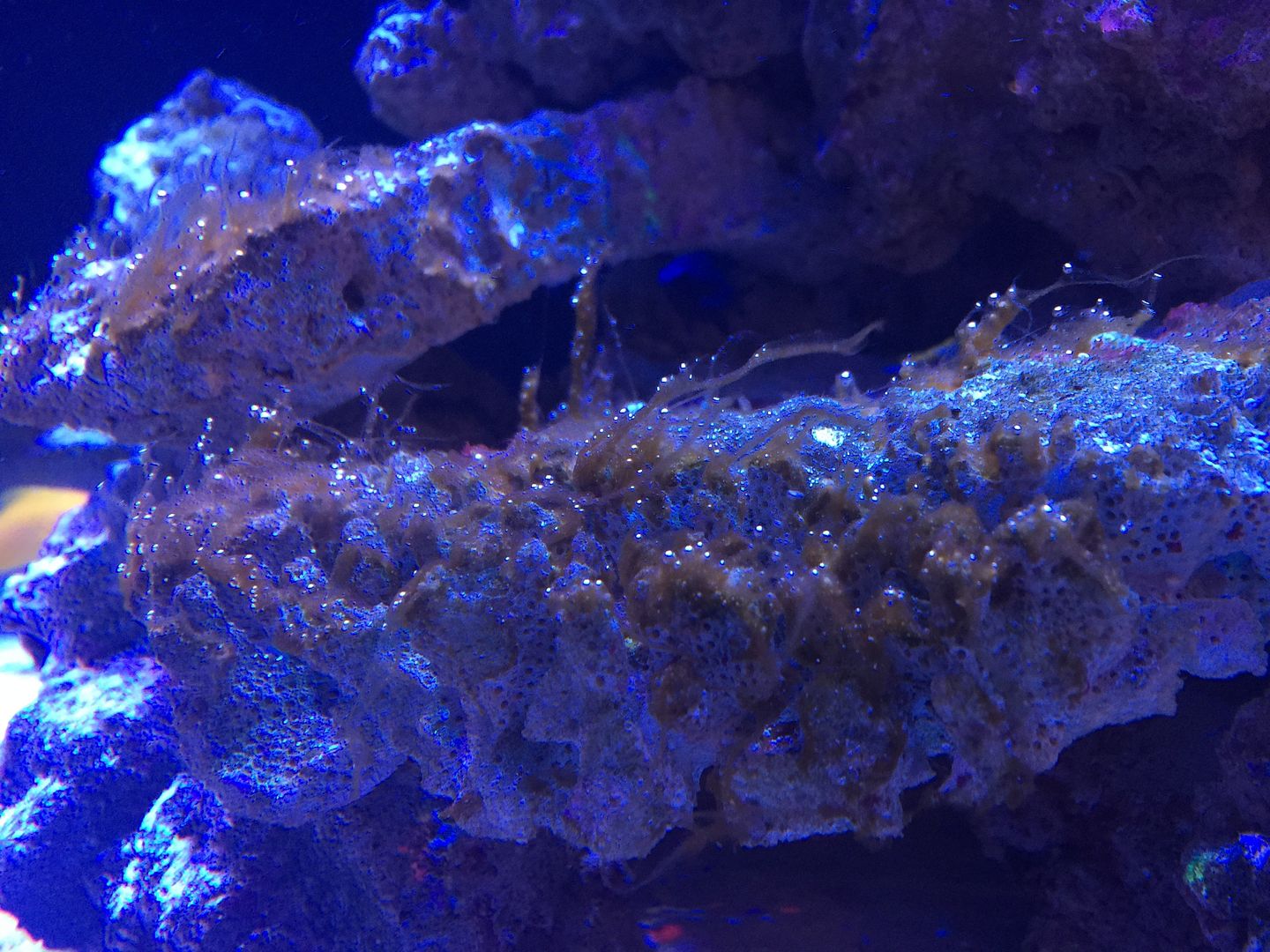 Here the same section on day three (actually middle of the night on day two IIRC, day three there wasn't much change so didn't take a photo). 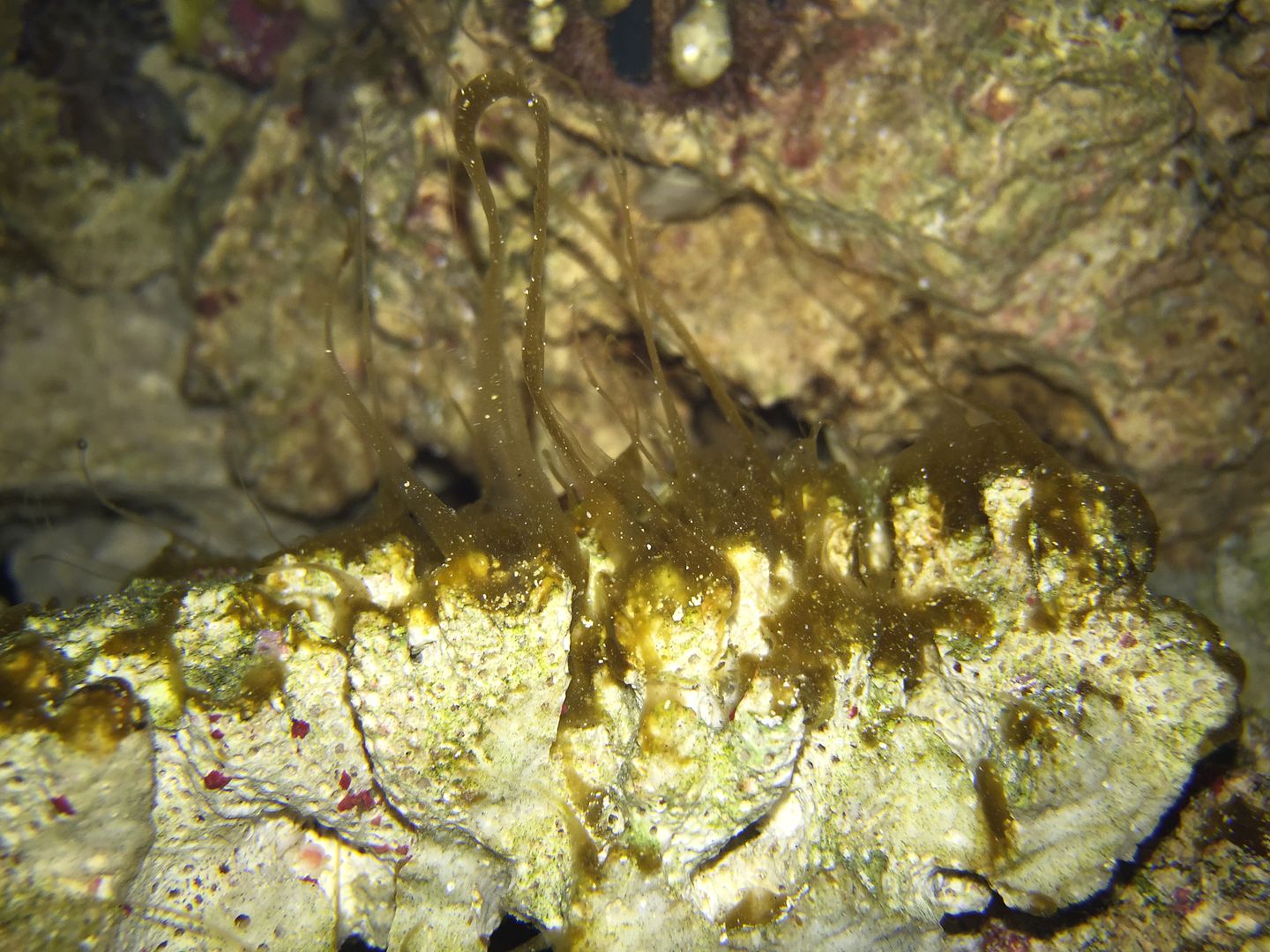 On day 4, the rocks had mostly cleared, however the sand was still snotty and I had snail and conch deaths as they were feeding in the area or on the Dinos. By day 8, the tank was completely clear and I decided to unwrap (actually I couldn't bare to do it any longer!). 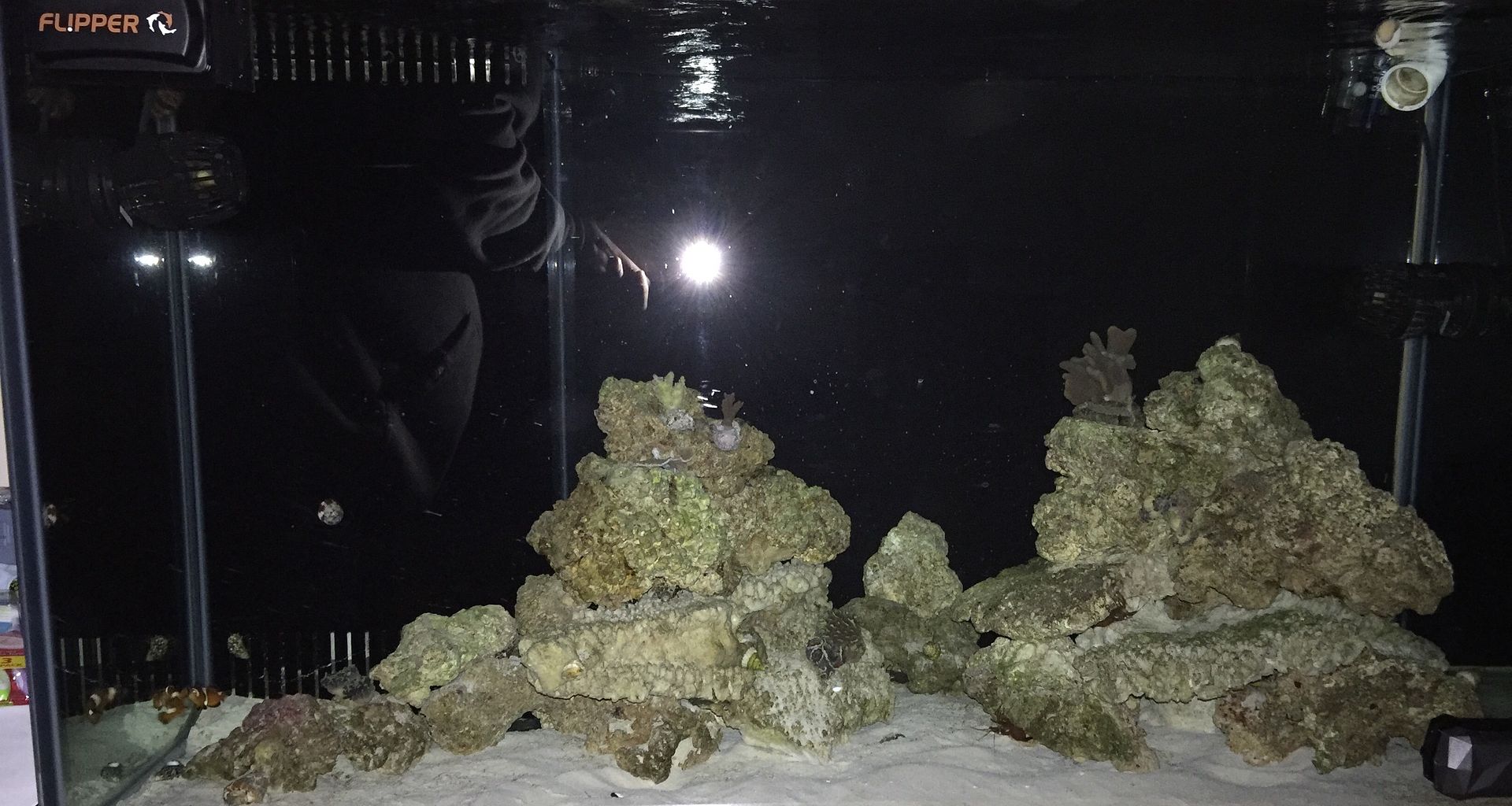 So as you can see, this was my experience and I was glad that I went for a longer period to knock the dinos back further. Otherwise I fear I would still be dealing with them 4/5 months on. It's up to the tank owner to assess what their coral's condition is and if they need to unwrap or they can go on further. Hope this last post clarifies Last edited by tastyfish; 03/06/2016 at 02:22 PM. |
||
|
|

|
|
|
#3252 |
|
Registered Member
Join Date: Mar 2010
Location: NE Miss
Posts: 608
|
Thanks for detailed account. Do you know the kind of dinos?
I'd be pretty dang discouraged if my tank looked like that after 3 days of darkness. |
|
|

|
|
|
#3253 |
|
Registered Member
Join Date: May 2004
Location: Dallas, TX
Posts: 11,033
|
Here's what I observed about dark periods with dinos without UV:
1. They have alternate food sources, so they can hunker down for a while. 2. The cyano they collaborate with suffers quite a bit, so other bacteria get a foothold consuming whatever was fueling the cyano. 3. The pods that eat the dinos can be out more frequently since the fish and other daylight predators can't hunt in the dark. So while it doesn't starve them, it does reduce their food sources, kill their friends and give free reign to their enemies. In some cases, that might win the war. But they're a plague, so it could take a month of these indirect attacks to kill them off. So, UV just creates a shortcut to their annihilation.
__________________
Failure isn't an option It's a requirement. 660g 380inwall+280smp/surge S/L/Soft/Maxima/RBTA/Clown/Chromis/Anthias/Tang/Mandarin/Jawfish/Goby/Wrasse/D'back. DIY 12' Skimmer ActuatedSurge ConcreteScape |
|
|

|
|
|
#3254 | ||
|
Registered Member
Join Date: Apr 2011
Location: Wrigleyville
Posts: 103
|
my issue is how quickly you are to dismiss and contradict advice from others that most certainly have been proven to work...your case may be the exception but it is not the norm when it comes to the photo sensitivity of dinos...this is your original post stating how just doing a 10 day blackout "WILL kill nearly all of them", in your own words, and that is something i also disagreed with (also partially disagree with UV - the first time it definitely worked and worked on its own without dirty method...second it did not help in my case)...just doing blackouts is not a cure and never has been but thank you for further clarifying your method didn't end at just doing blackouts...multi-pronged approaches are the way to go to beating them quicker than just doing the dirty method which, IMO, is the nail in the coffin
Quote:
|
||
|
|

|
|
|
#3255 |
|
Registered Member
Join Date: May 2004
Location: Dallas, TX
Posts: 11,033
|
guys... we're all on the same team... even if we disagree.
the dinos are the bad guys! What works for someone may not work for another. There's a lot of different dino species too.
__________________
Failure isn't an option It's a requirement. 660g 380inwall+280smp/surge S/L/Soft/Maxima/RBTA/Clown/Chromis/Anthias/Tang/Mandarin/Jawfish/Goby/Wrasse/D'back. DIY 12' Skimmer ActuatedSurge ConcreteScape |
|
|

|
|
|
#3256 | |||||
|
Registered Member
Join Date: Mar 2014
Posts: 240
|
Quote:
 Quote:
Quote:
 To be clear, once again though, I am in no way suggesting that ANY single method will work. The complete opposite. It is a multi-pronged attack, not using a wonder additive, or blackout etc. Here's a quote from earlier in the thread in response to a blackout of 3 days which didn't have the desired effect for the member. Quote:
 Quote:
On my final note, I'm surprised TBH by some of the responses in this thread if anyone voices a different opinion to their own thinking (actually in some cases it's not even their own thinking) - sadly I've found this to more prevalent on RC compared to other forums. So I will take this moment to unsubscribe from the thread and leave you guys to it. I don't want this to read as a flounce, the genuine aim is to help rather than argue. Good luck with the fight, it's winnable! |
|||||
|
|

|
|
|
#3257 |
|
Registered Member
Join Date: Mar 2010
Location: NE Miss
Posts: 608
|
I'll mention again.
If anyone has or knows of someone who has a toxic dino species (caused snail deaths or other tank deaths) I'd love to pay shipping to get my hands on them. PM me for details. |
|
|

|
|
|
#3258 | |
|
Registered Member
Join Date: Nov 2008
Location: los angeles
Posts: 770
|
Quote:
|
|
|
|

|
|
|
#3259 |
|
Registered Member
Join Date: May 2004
Location: Dallas, TX
Posts: 11,033
|
Get an ATS!!
__________________
Failure isn't an option It's a requirement. 660g 380inwall+280smp/surge S/L/Soft/Maxima/RBTA/Clown/Chromis/Anthias/Tang/Mandarin/Jawfish/Goby/Wrasse/D'back. DIY 12' Skimmer ActuatedSurge ConcreteScape |
|
|

|
|
|
#3260 |
|
Moved On
Join Date: Jan 2016
Posts: 60
|
so far so good but I still haven't done a water change. will do so this week.
|
|
|

|
|
|
#3261 |
|
Registered Member
Join Date: Nov 2008
Location: los angeles
Posts: 770
|
|
|
|

|
|
|
#3262 |
|
Registered Member
Join Date: May 2004
Location: Dallas, TX
Posts: 11,033
|
If you have external plumbing, you can plumb one in. In my case, I literally used my back end-to-end weir area:
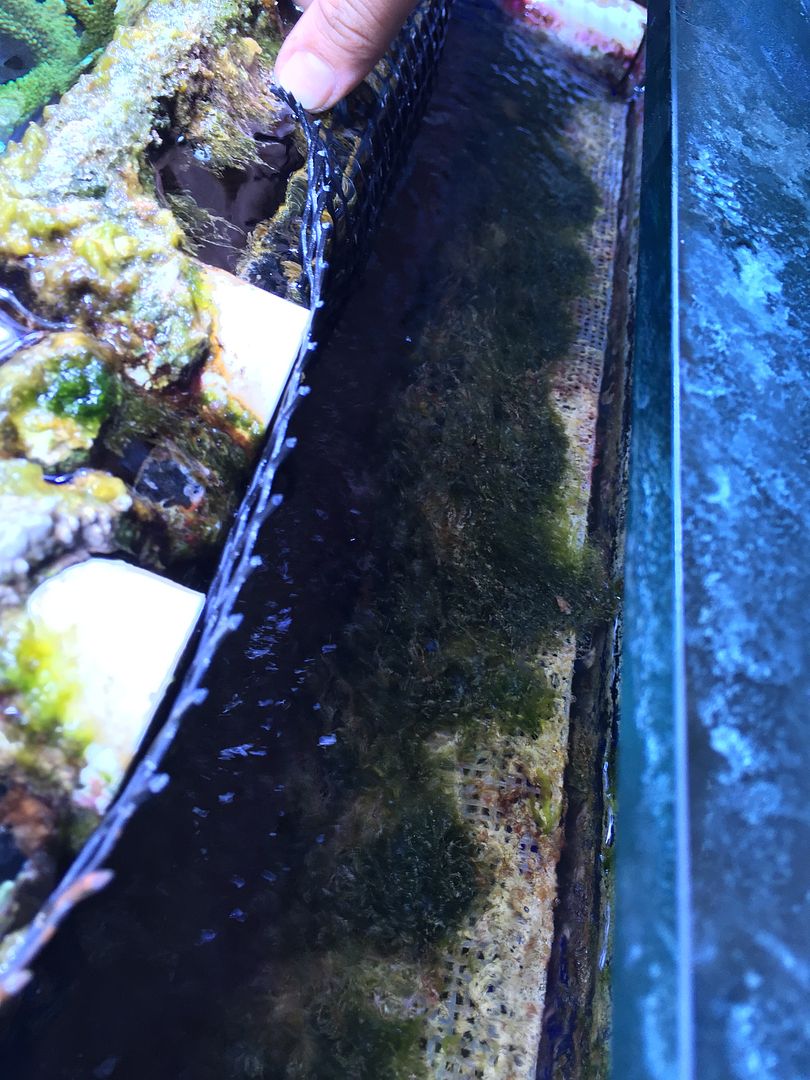 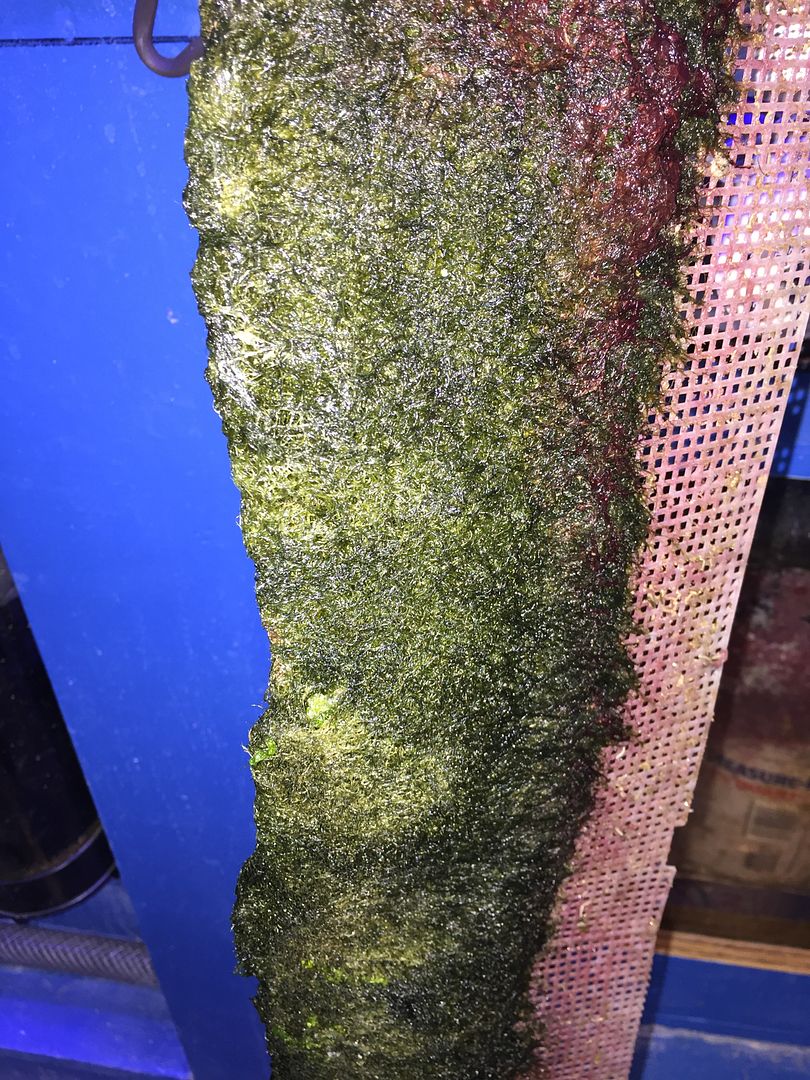 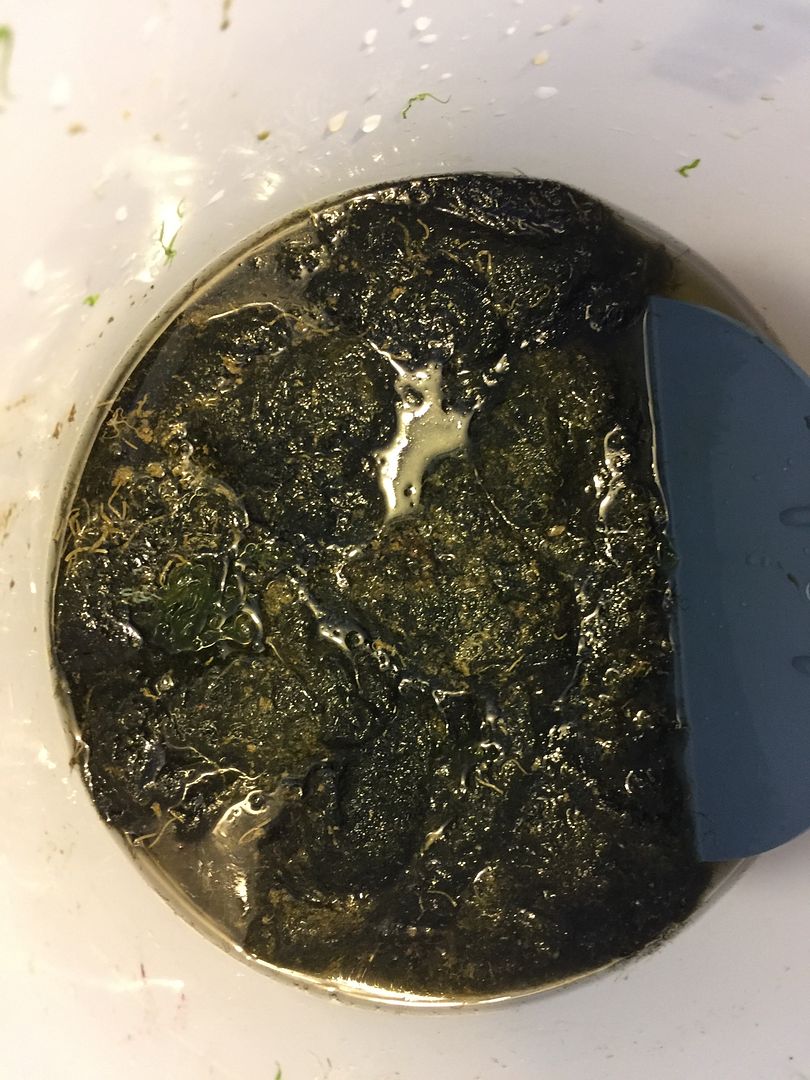
__________________
Failure isn't an option It's a requirement. 660g 380inwall+280smp/surge S/L/Soft/Maxima/RBTA/Clown/Chromis/Anthias/Tang/Mandarin/Jawfish/Goby/Wrasse/D'back. DIY 12' Skimmer ActuatedSurge ConcreteScape |
|
|

|
|
|
#3263 |
|
Registered Member
Join Date: Jun 2010
Posts: 385
|
So I have been fighting dinos in my tank for a couple of days now and have noticed something of interest. I have been siphoning into a filter sock into my sump (in place of water change to remove the dinos) and noticed that underneath the dinos in many spots in the tank are hair algae. I was hoping this meant that it was just cyano coating the hair algae since the rock is all new rock (used cycled media) but texture, 0 no3 and po4 with an overflowing skimmer tells me I am most likely dealing with dinos.
I am fortunate to not be dealing with a toxic variety and have had no deaths due to the unbelievable outbreak so I am taking a methodical approach to dealing with it. The only pieces in this tank are frags (or bubble tips) so I daily pull the frags and clean them to avoid death by smothering. Fish are fine and eating well. My plan is to continue daily manual removal via siphoning, plug cleaning and skimming and will begin dosing phyto. My hope is to limp along without water changes (don't need them anyways at the moment) and hope that the dinos will choke themselves out. I plan to give this a couple of weeks before trying a more aggressive approach. |
|
|

|
|
|
#3264 |
|
Registered Member
Join Date: May 2004
Location: Dallas, TX
Posts: 11,033
|
A UV is ~$100 and three days black out is free. I would start there.
__________________
Failure isn't an option It's a requirement. 660g 380inwall+280smp/surge S/L/Soft/Maxima/RBTA/Clown/Chromis/Anthias/Tang/Mandarin/Jawfish/Goby/Wrasse/D'back. DIY 12' Skimmer ActuatedSurge ConcreteScape |
|
|

|
|
|
#3265 |
|
Registered Member
Join Date: Jul 2006
Location: Winter Haven, Florida
Posts: 2,085
|
I don't think a $100 UV is going to help with anything...
__________________
-Matt |
|
|

|
|
|
#3266 |
|
Registered Member
Join Date: May 2004
Location: Dallas, TX
Posts: 11,033
|
Have you tried it?
Read the last 100 pages .. 
__________________
Failure isn't an option It's a requirement. 660g 380inwall+280smp/surge S/L/Soft/Maxima/RBTA/Clown/Chromis/Anthias/Tang/Mandarin/Jawfish/Goby/Wrasse/D'back. DIY 12' Skimmer ActuatedSurge ConcreteScape |
|
|

|
|
|
#3267 |
|
Registered Member
Join Date: Nov 2008
Location: los angeles
Posts: 770
|
|
|
|

|
|
|
#3268 | ||||
|
Registered Member
Join Date: Mar 2013
Posts: 59
|
To be fair to tastyfish...
Quote:
So while I'm not endorsing the idea, I can see a mechanism that might explain why tastyfish is... If it gets some takers and turns out to work as advertised, it may deserve consideration for a spot in the FAQ as the official Measure of Last Resort. Growth, Feeding and Ecological Roles of the Mixotrophic and Heterotrophic Dinoflagellates in Marine Planktonic Food Webs http://hosting03.snu.ac.kr/~hjjeong/...%2045%2065.pdf Life cycle stages of the benthic palytoxin-producing dinoflagellate Ostreopsis cf. ovata (Dinophyceae) http://digital.csic.es/bitstream/102...post_print.pdf -- Quote:
Note that the AA culturing technique is about producing microorganisms of maximum nutritional value, as they're talking about culturing them for food. In that paper, the food web diagram indicates that ciliates eat bacteria, so you might be able to culture them (or culture a different species) by triggering a bacteria bloom with a few grains of boiled wheat, rice, or barley. |
||||
|
|

|
|
|
#3269 |
|
Registered Member
Join Date: Sep 2014
Location: Chicago
Posts: 105
|
Taricha,
How does one ship a sample of Dino? I've never identified mine even though I'm hitting the two year mark with them (I think). I'd scrape some off my glass next time it builds up enough. I'd pay the shipping if you wouldn't mind identifying them for me. And maybe you get lucky and get the species you're looking for. |
|
|

|
|
|
#3270 |
|
Moved On
Join Date: Jan 2016
Posts: 60
|
|
|
|

|
|
|
#3271 |
|
Registered Member
Join Date: Jul 2006
Location: Winter Haven, Florida
Posts: 2,085
|
i tried finding a reference to a $100 uv. I'm all in on a UV working, I'm actually about to purchase one of the emperor aquatics 18 or 25w. From everything I've read a cheap uv does nothing? Maybe I missed it? Would be great if that was wrong, I'd rather not spend triple that on one if a cheaper one works??
__________________
-Matt |
|
|

|
|
|
#3272 | |
|
Registered Member
Join Date: Mar 2010
Location: NE Miss
Posts: 608
|
Quote:
I'll post here in case anyone else has a better idea how to ship dinos. Seriously, who ships dinos? And cares about them getting there alive? :-) "I haven't shipped dinos either. Dinos are tough enough I hope. I don't expect we'll need to be fancy. I'd suck out a nice amount of them off the rocks or sand or whatever and put in a clean water bottle (like 20oz), filling the rest almost completely with tank water, leave a little air. Then I'd close it up, and wrap it in towels or old shirts or whatever for cushioning and insulation and shove it in a box." Yes, I'll gladly put them under the scope and get pics/vids so we can ID them. Thanks a bunch! I'll PM you shipping details. |
|
|
|

|
|
|
#3273 | |
|
Registered Member
Join Date: Mar 2010
Location: NE Miss
Posts: 608
|
Quote:
And maybe it's not the issue that there's a different mechanism that takes effect between days 4 and 10. Maybe it's just the math of exponential growth: 2 to the 3rd is only 8, but 2 to the 10th power is 1024. Also, you mentioned a hypothetical benthic heterotrophic dino species. Do we know of any such species? I haven't run across one. |
|
|
|

|
|
|
#3274 | |
|
Registered Member
Join Date: May 2004
Location: Dallas, TX
Posts: 11,033
|
Quote:
UV is UV. You can argue that the cheaper models less efficient and will consume more power. You can argue that they're harder to keep clean. You can argue that they're large compared to the more compact versions, you can argue that the bulbs burn out sooner and need to be replaced more often, etc... etc... But a UV bulb is a UV bulb... will it work? if it puts out enough UV AND you run water through it slowly, it will zap dinos (and anything else). It only took a few days for my tank to clear up, and a month to be dino free. I ran it for a few months after that and now only run it at night...
__________________
Failure isn't an option It's a requirement. 660g 380inwall+280smp/surge S/L/Soft/Maxima/RBTA/Clown/Chromis/Anthias/Tang/Mandarin/Jawfish/Goby/Wrasse/D'back. DIY 12' Skimmer ActuatedSurge ConcreteScape |
|
|
|

|
|
|
#3275 |
|
Registered Member
Join Date: Jul 2006
Location: Winter Haven, Florida
Posts: 2,085
|
You ran a $100 uv on a 660g tank and it killed the Dino? Who makes it and where do I buy one?
__________________
-Matt |
|
|

|
 |
| Thread Tools | |
|
|